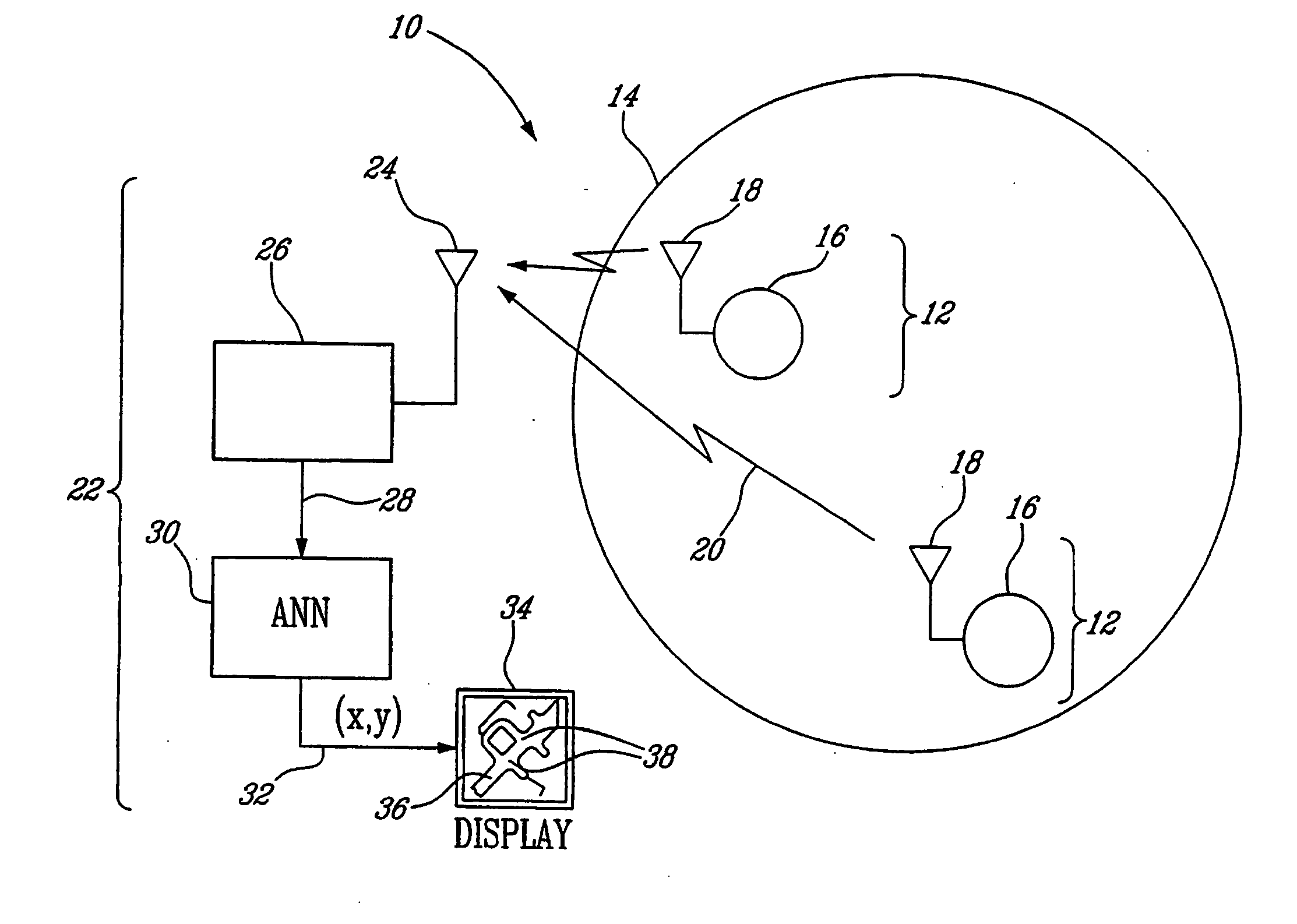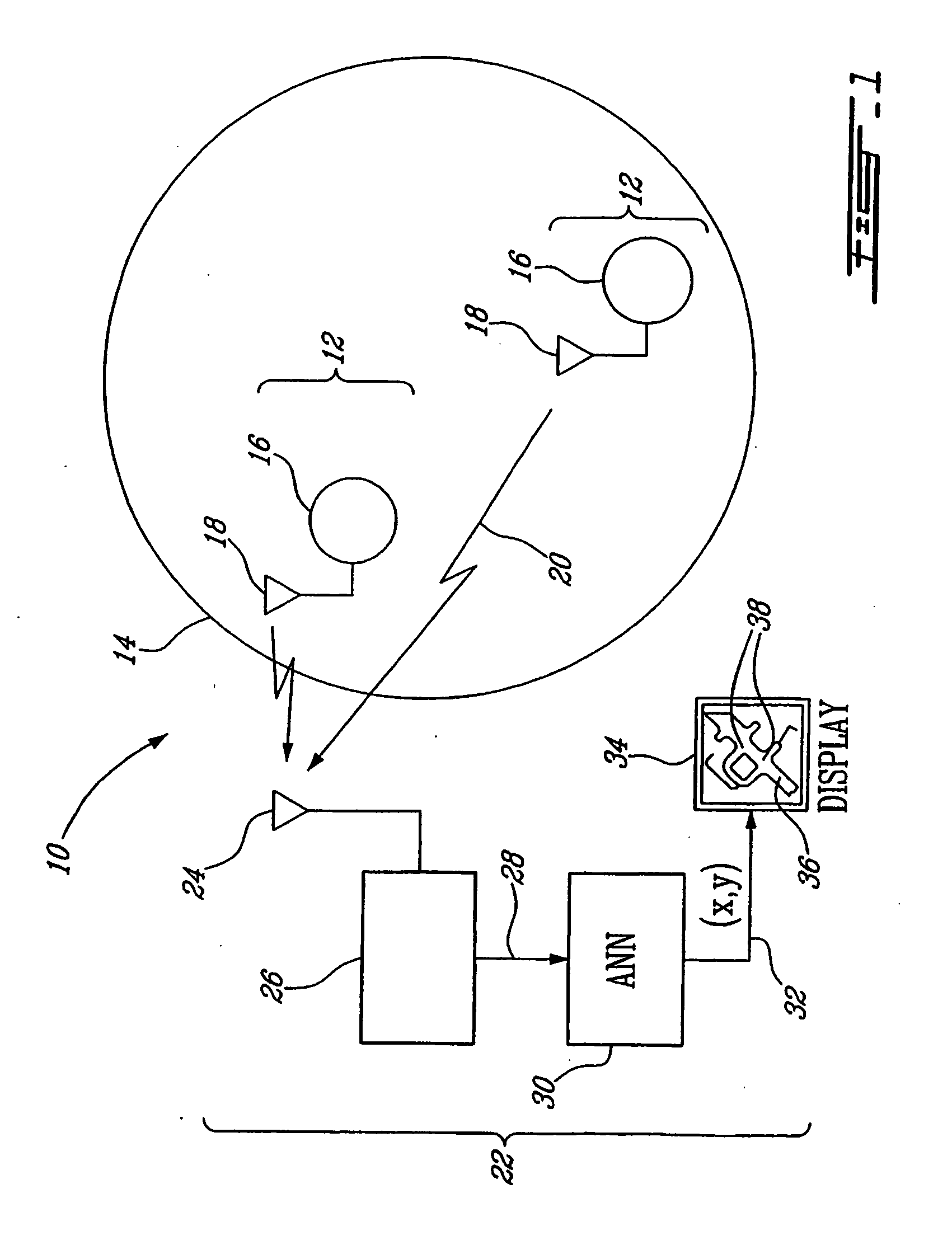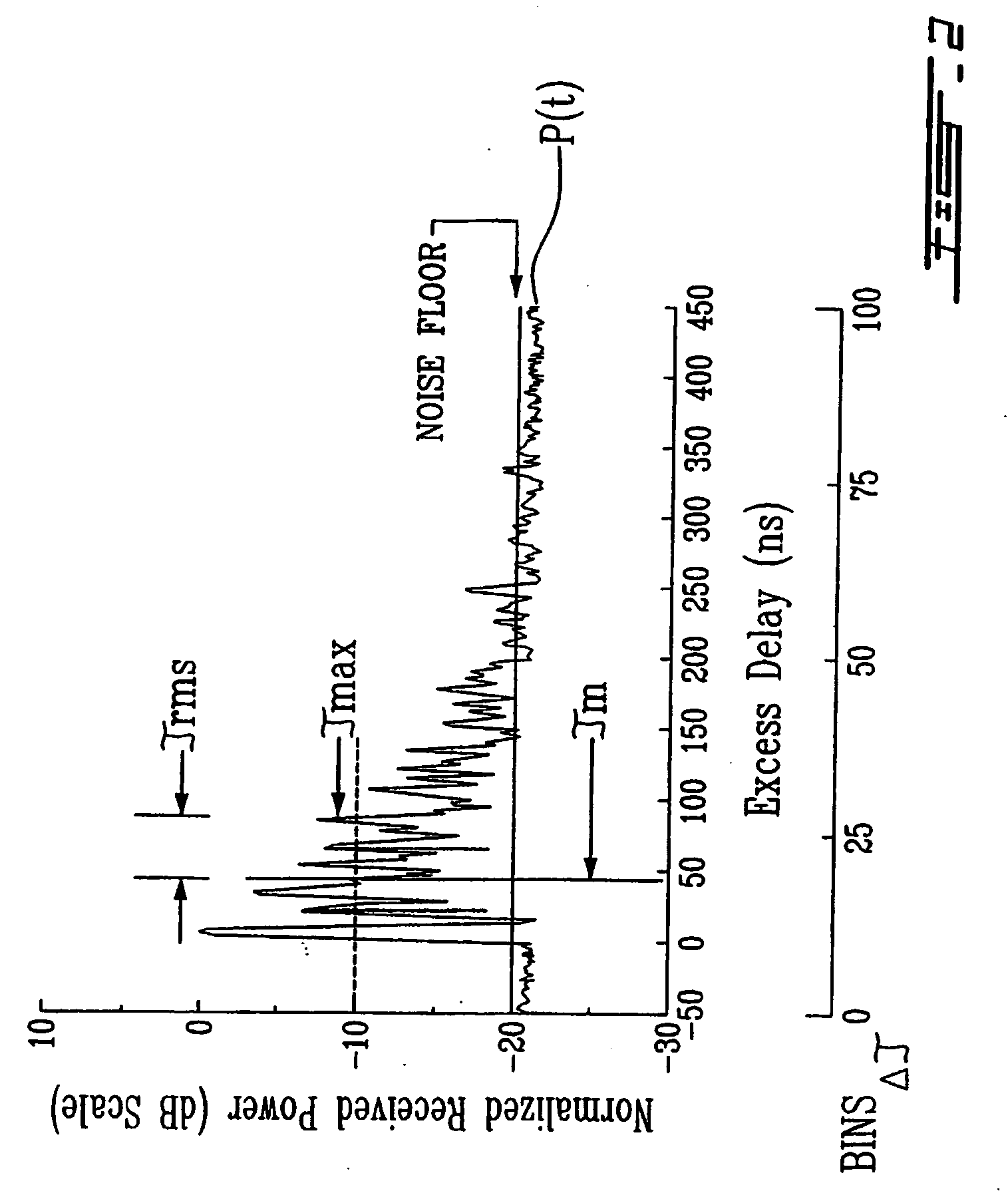Method and system for indoor geolocation using an impulse response fingerprinting technique
a fingerprinting and impulse response technology, applied in the direction of navigation instruments, dc level restoring means or bias distorting correction, instruments, etc., can solve the problems of inadequacies of existing radio channel models developed for telecommunications, inability to meet the needs of indoor radio channels, and inability to provide parametric geolocation techniques (and combinations thereof) to provide only limited location accuracy
- Summary
- Abstract
- Description
- Claims
- Application Information
AI Technical Summary
Benefits of technology
Problems solved by technology
Method used
Image
Examples
Embodiment Construction
[0044] Referring now to FIG. 1, a geolocation system, generally referred to using the reference numeral 10, in accordance with an illustrative embodiment of the present invention will now be described. The geolocation system 10 consists of at least one mobile transmitter as in 12 located in a zone of interest 14. The zone of interest 14 is illustratively an underground gallery of a mineshaft comprised of a series of interconnected tunnels (not shown) and within which the mobile transmitters 12 are free to move, although other environments, such as hospitals, shopping malls, campuses and the like, could also provide suitable zones of interest.
[0045] The mobile transmitters 12 broadcast channel sounding signals generated by a radio frequency (RF) synthesizer 16 which are transmitted via an antenna 18 and a wireless RF channel 20 to a fixed receiver 22. The fixed receiver 22 comprises an antenna 24, a network analyser 26 for deriving the complex impulse response of the channel 20 from...
PUM
 Login to View More
Login to View More Abstract
Description
Claims
Application Information
 Login to View More
Login to View More - R&D
- Intellectual Property
- Life Sciences
- Materials
- Tech Scout
- Unparalleled Data Quality
- Higher Quality Content
- 60% Fewer Hallucinations
Browse by: Latest US Patents, China's latest patents, Technical Efficacy Thesaurus, Application Domain, Technology Topic, Popular Technical Reports.
© 2025 PatSnap. All rights reserved.Legal|Privacy policy|Modern Slavery Act Transparency Statement|Sitemap|About US| Contact US: help@patsnap.com



